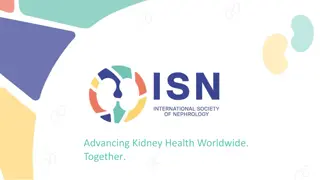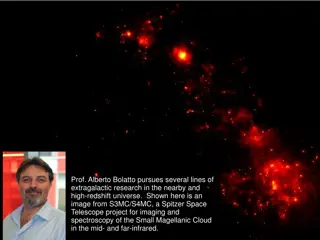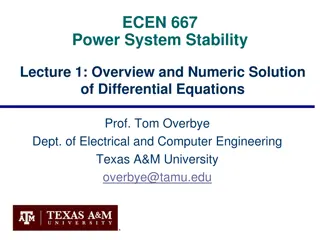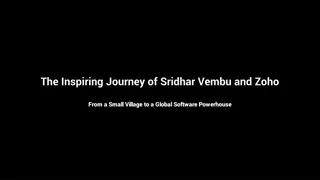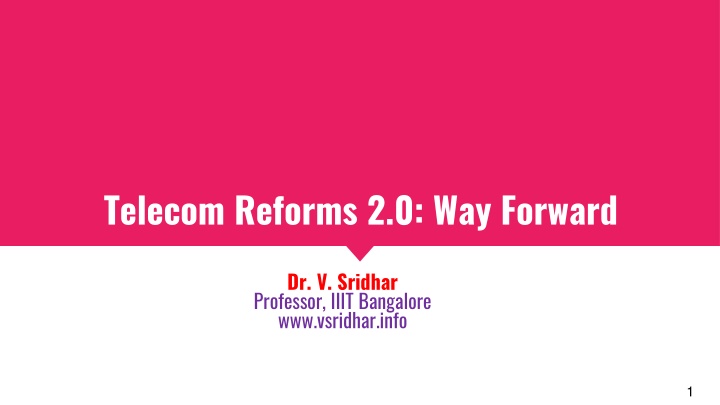
Optimizing Telecom Sector for Growth: Reforms and Challenges
Explore the recent telecom reforms in India, including relief packages, regulatory levies, spectrum management, and more. Learn about key initiatives to boost efficiency, reduce burdens, and maximize spectrum utilization for societal benefits.
Download Presentation

Please find below an Image/Link to download the presentation.
The content on the website is provided AS IS for your information and personal use only. It may not be sold, licensed, or shared on other websites without obtaining consent from the author. If you encounter any issues during the download, it is possible that the publisher has removed the file from their server.
You are allowed to download the files provided on this website for personal or commercial use, subject to the condition that they are used lawfully. All files are the property of their respective owners.
The content on the website is provided AS IS for your information and personal use only. It may not be sold, licensed, or shared on other websites without obtaining consent from the author.
E N D
Presentation Transcript
Telecom Reforms 2.0: Way Forward Dr. V. Sridhar Professor, IIIT Bangalore www.vsridhar.info 1
Telecom Relief Package 1.0 Providing a 4-year moratorium on the payment of Spectrum Usage Charges (SUC) as percentage of the Adjust Gross Revenue (AGR) The government also has redefined the calculation of AGR to exclude non-telecom revenue which should reduce the regulatory burden substantially for the telcos Abolition of 0.5 percent additional annual SUC on shared spectrum which is likely to pave way for more sharing of spectrum between operators Allowing telcos to surrender spectrum after 10 years will promote efficient use of spectrum and prevent under utilization Extension of spectrum license period from the current 20 years to 30 years International average is 15 years Longer visibility for the Telcos 2 ITU-APT Foundation of India 16 Dec 2021
Telecom Relief 2.0 3 ITU-APT Foundation of India 16 Dec 2021
2.1. Regulatory Levies in India Regulatory levy on the sector which is one of the highest in the world. License fees, annual Spectrum Usage Charges, and other fees including Right of Way charges for installing the telecom infrastructure have burdened the telecom sector in our country 3-5% Annual Spectrum Charges; 8% Annual License Fee USOF Balance: Rs. 58,765 Cr Need to reduce the USL from 5% of AGR to 2-3% 4 ITU-APT Foundation of India 16 Dec 2021
2.2. Spectrum: As a cash cow for the Governments India: Since 2010, the radio spectrum auction has yielded Rs. 330,000,00,00,000 (about $50 Billion) to the GoI exchequer The recent one being in Feb-Mar 2021 -> Rs. 77,000, 00,00,000 ($12 Billion) However, Reserve Price in Indian SMRA Auctions are very high Prevented 700 MHz being picked up in 2016 as well as in Feb 2021 Reserve price is one of the important factors affecting positively the winning bid prices in spectrum auctions Government needs to trade-off between revenue earned vs. effective utilization of scarce spectrum resource TRAI consultation paper on Spectrum 5 ITU-APT Foundation of India 16 Dec 2021
2.3. Effective Spectrum Management TRAI recent consultation paper indicates allocation of 500, 600, 700, 800, 900, 1800, 2100, 2300, 2500, 3300-3670, and 24.25 to 28.5 GHz bands However, traditionally very little spectrum is allotted in Indian auctions Regulators and policymakers need to shift usage of spectrum from unused or underused areas to one that yields maximal societal benefits -> Regular Spectrum Audit Requires coordinated action across DoT, Ministry of Defence, Department of Space, Ministry of Information & Broadcasting, Railways, Public Utilities 6 ITU-APT Foundation of India 16 Dec 2021
2.4. The 60 GHz Band: Licensed -> Unlicensed Complement Unlicensed bands with Licensed bands V-Band (57-71 GHz) provides high capacity point-to-point and point-to- multipoint connectivity Can be used for Fixed Wireless as well as for Backhaul IEEE 802.11 ad and ay -> unlicensed Giga Wi-Fi Austria, Belgium, Poland, Slovakia, Spain, UK along with China, Korea, Malaysia, Australia and New Zealand have unlicensed the V-band The United States Federal Communication Commission, through a number of regulatory directives has released spectrum in 57-71 GHz for license exempt use India: V-band 64-71 GHz is used for backhaul TRAI recommended in 2015 for delicensing 57-64 GHz 7 ITU-APT Foundation of India 16 Dec 2021
2.5. Inviting Capital and Competition Huge interest in Indian Telecom in early part of liberalization and post 2008 Waned over a period of time 100% FDI through Automatic Route is welcome However, why are foreign firms or investors wary? Policy uncertainty Is there a place for a 5thTelco? Certainly in a Billion subscriber market 8 ITU-APT Foundation of India 16 Dec 2021
Publication Sridhar, V., Prasad, Rohit. (2021). Analysis of Spectrum Pricing for Commercial Mobile Services: A Cross Country Study. Telecommunications Policy. https://doi.org/10.1016/j.telpol.2021.102221 (can be viewed for limited time at: https://authors.elsevier.com/a/1dRnJ16AgYAzqf) 9 ITU-APT Foundation of India 16 Dec 2021
Reserve Prices in India Average reserve price fixed by the GoI for 700 MHz in Feb 2021 auction is about $1.89 per MHz per pop (adjusted for PPP) several times higher than that set Internationally ($0.05) and is also higher than the mean winning bid price witnessed worldwide ($0.54) The reserve price in metros is about $8.72, several times higher than mean winning bid prices in other country Only the category C circles had the reserve price set at $0.53, a bit closer to winning prices in other countries The Telecom Regulatory Authority of India (TRAI, 2018) has recommended a mean reserve price for the mid-band at $0.28 which is 14 times more than the mean reserve price worldwide of $0.02 At metros, the reserve price, much similar to the 700 MHz, is very high at $1.3 Only in category C circles the reserve price is low at $0.073 And is comparable to world reserve prices 10 ITU-APT Foundation of India 16 Dec 2021
India: In adequate Spectrum U.S. auction 96 in 2014, a total of 1760 MHz of the 1900 MHz spectrum band were put on the block across service areas However, in the same year, India put on auction only a total of 862.40 MHz in the 1800 MHz band. Remarkably so, while the US made available about 15,000 MHz spectrum across bands during the period 2010 2016, India auctioned a minuscule 1500 MHz per auction across different bands. 11 ITU-APT Foundation of India 16 Dec 2021
Spectrum Audit Spectrum audit needs to be conducted by TRAI on spectrum holdings by the government agencies, including defense, space, railways, and public utilities so that the precious scarce spectrum can be out in to efficient use. The refarming of spectrum in 1800 MHz held by the defense for commercial mobile services in recent years has helped improve spectrum utilization in this band Similar exercise is needed in other bands as well, especially in 26 GHz held by the Department of Space that is critical for roll out of 5G network services. ITU-APT Foundation of India 12 16 Dec 2021
Government Spectrum In most countries the government holds a major portion of the radio spectrum In the UK, for instance, the defense ministry accounts for 75 percent of the public sector spectrum In India: The 3.3 3.6 GHz spectrum that is being used by many countries is not available in India as it interferes with satellite downlink frequencies of the Department of Space (DoS), Government of India Only recently the 1800 MHz spectrum band was refarmed from Defense use to commercial mobile services In the US., The 600-700 MHz interfere with traditional TV broadcasting, being provided by public broadcasting firms Recently released for commercial mobile services using 13 ITU-APT Foundation of India 16 Dec 2021
Q&A 14 ITU-APT Foundation of India 16 Dec 2021


